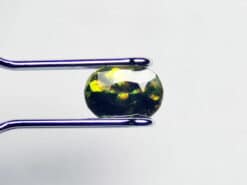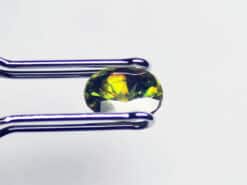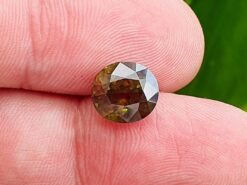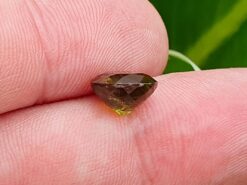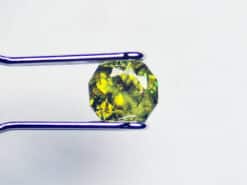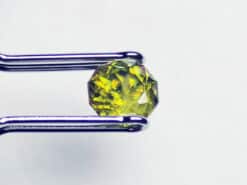Sphene
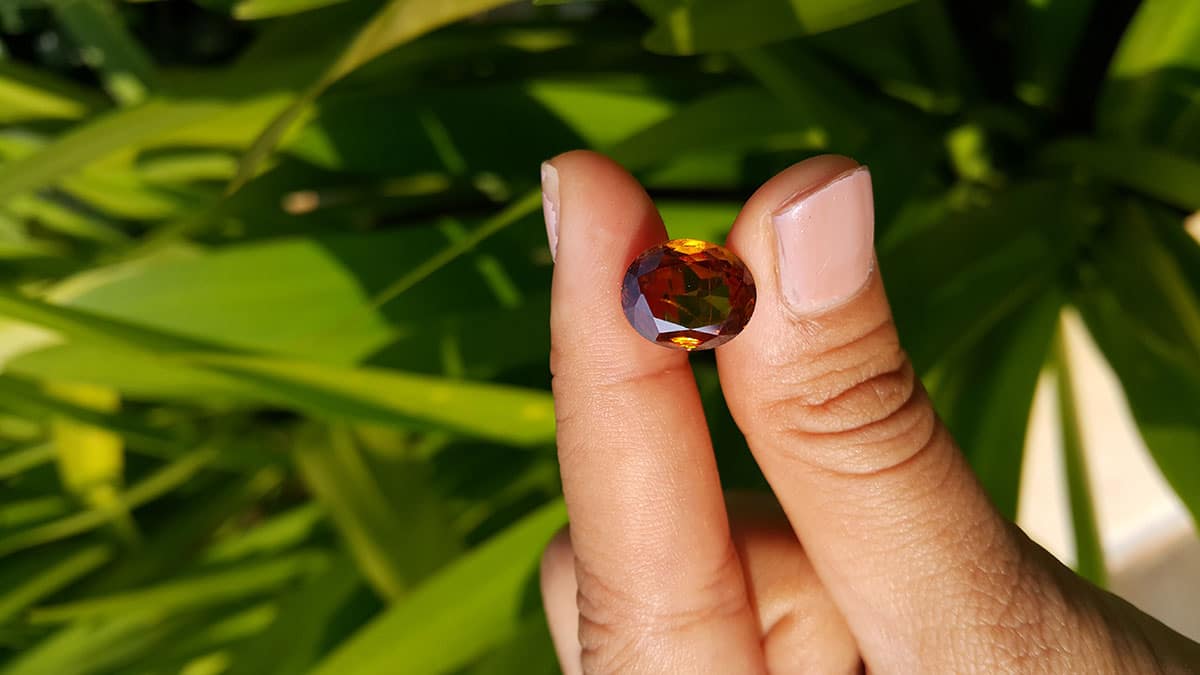
Sphene gemstone meaning, also named titanite gem stone.
Buy natural sphene in our shop
Titanite
Sphene, or Titanite, is a calcium titanium nesosilicate mineral, CaTiSiO5. Trace impurities of iron and aluminium are typically present. Also commonly present are rare earth metals including cerium and yttrium, calcium may be partly replaced by thorium.
The stone occurs as translucent to transparent, reddish brown, gray, yellow, green, or red monoclinic crystals. These crystals are typically sphenoid in habit and are often twinned. Possessing a subadamantine tending to slightly resinous luster, titanite has a hardness of 5.5 and a weak cleavage. Its specific gravity varies between 3.52 and 3.54.
Titanite’s refractive index is 1.885-1.990 to 1.915-2.050 with a strong birefringence of 0.105 to 0.135, biaxial positive, under the microscope this leads to a distinctive high relief which combined with the common yellow brown colour and lozenge-shape cross-section makes the mineral easy to identify.
Transparent specimens are noted for their strong trichroism, the three colours presented being dependent on body colour. Owing to the quenching effect of iron, sphene exhibits no fluorescence under ultraviolet light. Some titanite has been found to be metamict, in consequence of structural damage due to radioactive decomposition of the often significant thorium content.
When viewed in thin section with a petrographic microscope, pleochroic halos can be observed in minerals surrounding a titanite crystal.
Titanium dioxide
Sphene is a source of titanium dioxide, TiO2, used in pigments.
As a gemstone, titanite is usually some shade of chartreuse, but can be brown or black. Hue depends on Fe content, with low Fe content causing green and yellow colours, and high Fe content causing brown or black hues.
Zoning is typical in titanite. It is prized for its exceptional dispersive power, 0.051, B to G interval , which exceeds that of diamond. Jewelry use of titanite is limited, both because the stone is uncommon in gem quality and is relatively soft.
Titanite can also be used as a U-Pb geochronometer, specifically in metamorphic terranes.
Sphene meaning and properties
The following section is pseudo scientific and based on cultural beliefs.
Sphene is a gemstone that has a meaning and properties related to studying. It is known as a gemstone that can make owner’s thoughts clear and gives wonderful knowledge. Sphene has been believed for its power to enhance owner’s mental power. By having strong and sharp mind, you will be able to create rich life.
Sphene has a strong action at the third eye chakra, and will boost mental activity, and aid you to absorb new information. It is within the crown chakra.
FAQ
What is sphene gem used for?
The stone continues to be the name used for titanite in the gem and jewelry industries. It is a minor gemstone that is popular with collectors because of its high dispersion. The crystal is one of the few minerals with a dispersion higher than diamond.
What color is sphene gemstone?
Occasionally pink, black or brown, most stone is predominantly green or yellowish-green, with colorful flashes of a rainbow of hues. There are yellow, orange, brown or green gems with many gradations between those colors.
Is sphene stone a pleochroic?
The stone is known for its exceptional dispersion, resulting in gemstones that show brilliant fire. The dispersion of the gem exceeds even that of Diamond. However, the relatively low hardness inhibits its use as a mainstream gemstone.
Where does the best sphene come from?
The primary sources are Canada, Madagascar and Mexico. Baja California, Mexico produces yellow-brown, brown, green and dark green chrome crystals up to 4 inches long, making it one of the world’s main deposits.
Natural sphene for sale in our gem shop
We make custom made sphene jewelry as engagement rings, necklaces, stud earrings, bracelets, pendants… Please contact us for a quote.

